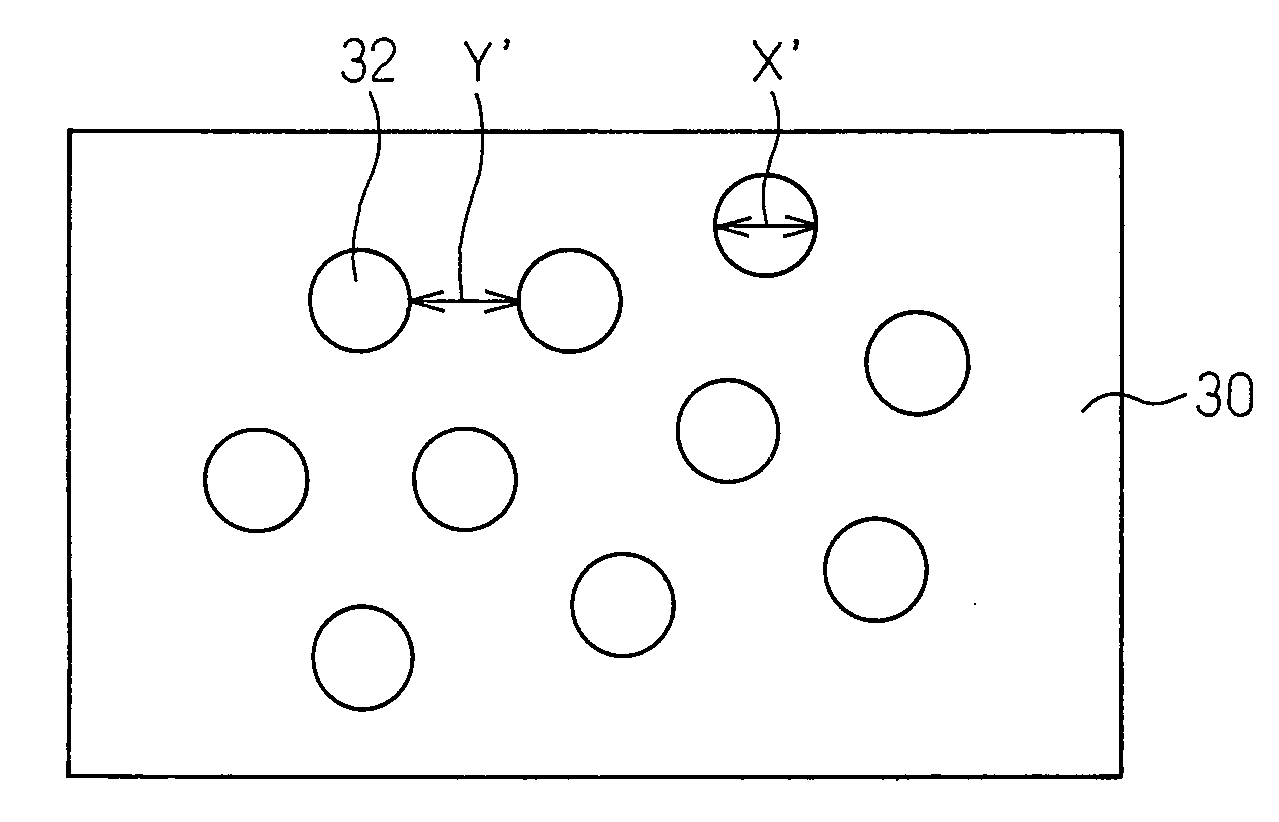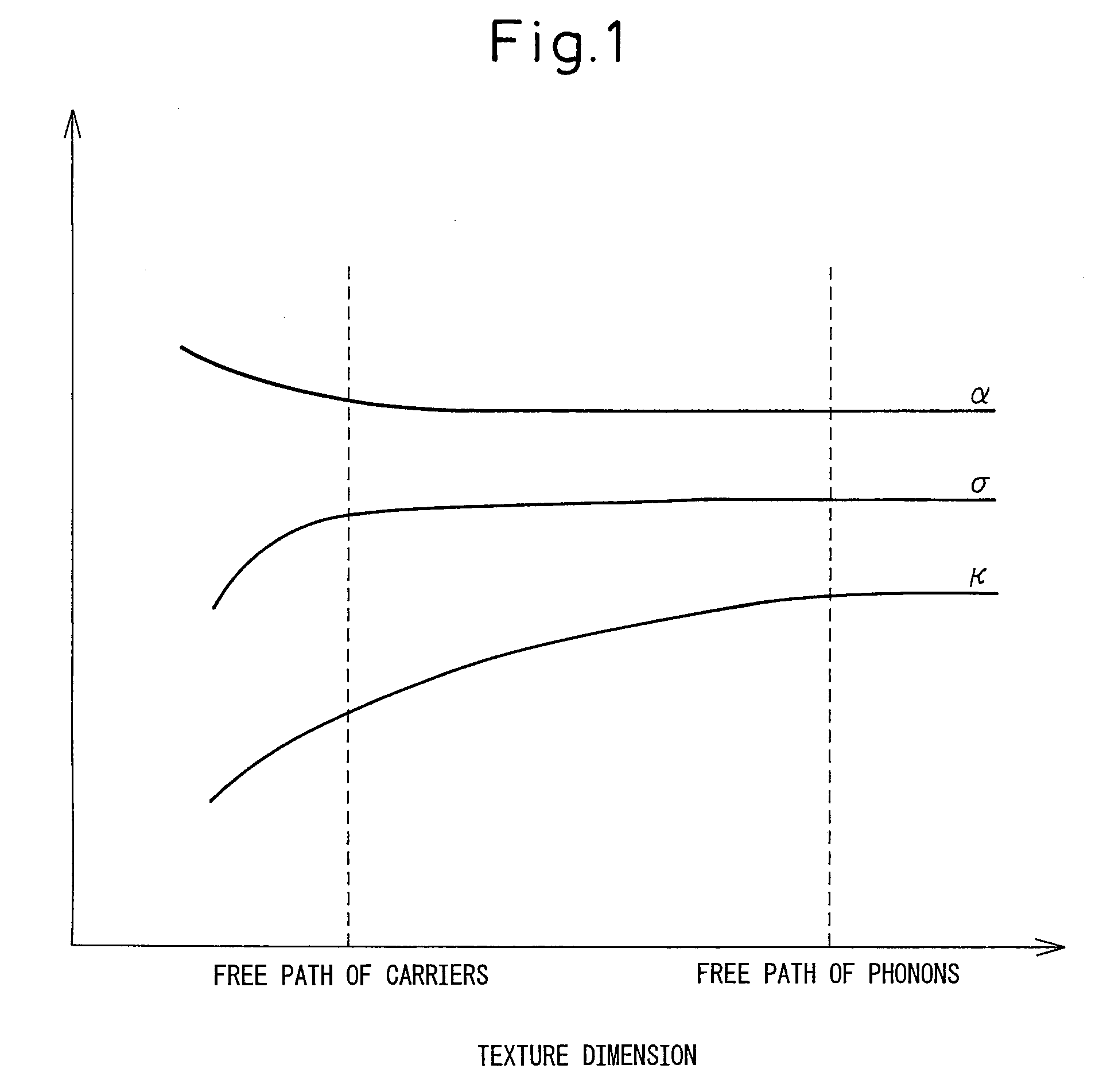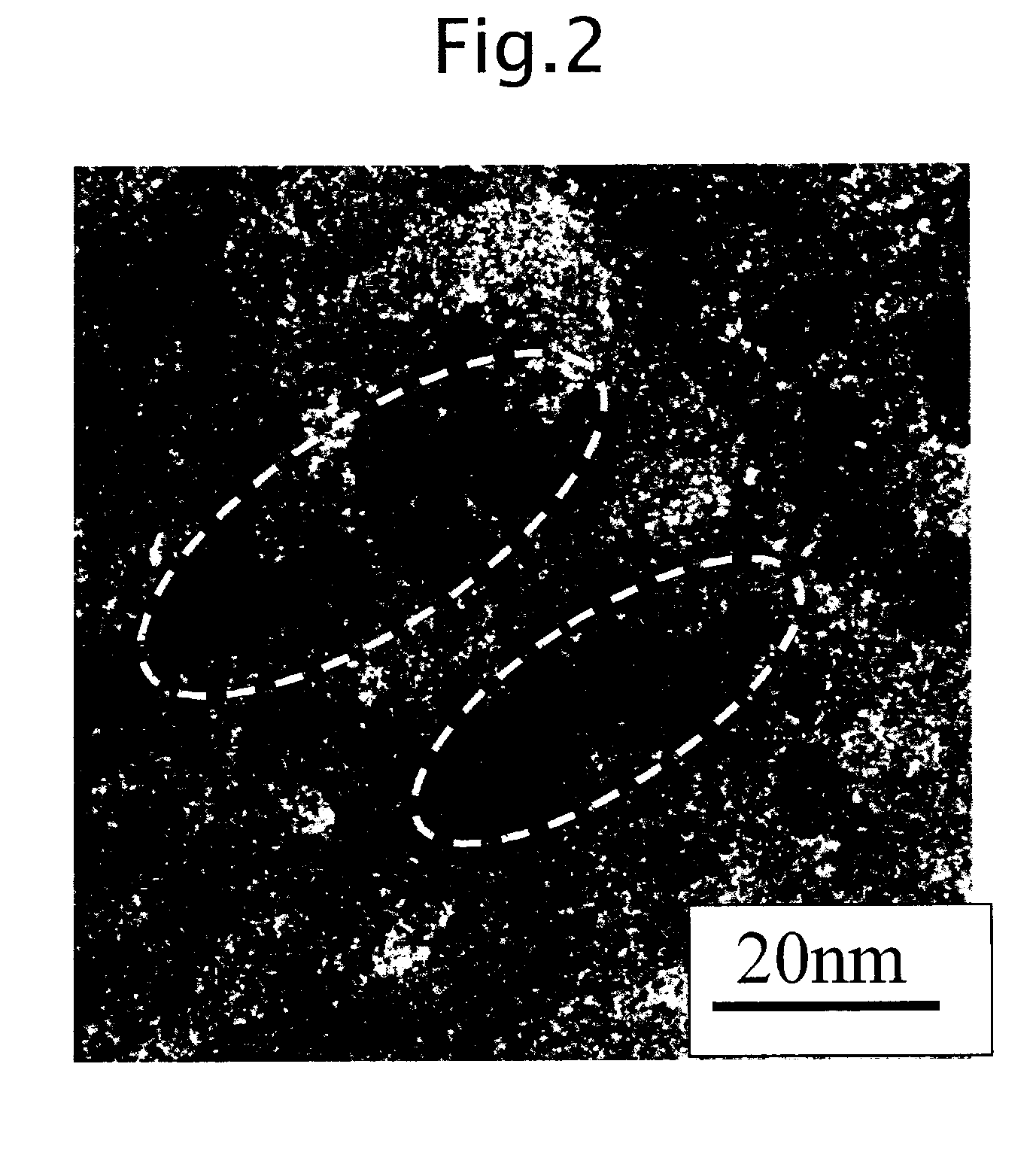Thermoelectric conversion material and method of producing the same
a technology thermal conversion material, which is applied in the direction of thermoelectric device junction material, thermoelectric device manufacture/treatment, electrical apparatus, etc., can solve the problems of difficult to improve the performance of thermoelectric conversion material, and prior art is not closely studying a state. achieve the effect of reliable suppression of insulating material
- Summary
- Abstract
- Description
- Claims
- Application Information
AI Technical Summary
Benefits of technology
Problems solved by technology
Method used
Image
Examples
examples
[0079]A slurry (1) was prepared by dispersing 3.6 g of NaBH4 and 12 g of alumina (mean particle size of 15 to 25 nm) in 100 mL of ethanol. Further, a slurry (2) was prepared by adding 1.00 g of CoCl2.6H2O and 2.88 g of SbCl3 to 100 mL of ethanol and further adding thereto the nitric acid as a pH-adjusting agent to adjust the pH thereof to be 6.0.
[0080]The above slurry (1) was added dropwise to the slurry (2), and the mixture was held at 25° C. for 0.5 hours, so that nano particles of Co and Sb were precipitated on the alumina particles. The slurry was filtered and the filtrate was introduced into a mixed solution of ethanol, and water, which was thereafter, stirred and filtered. This operation was repeated twice. After filtered two times, ethanol was added thereto to prepare 100 mL of slurry.
[0081]The obtained slurry was heat-treated in an autoclave container at 240° C. for 24 hours to obtain composite nano particles.
[0082]By using an electric discharge plasma sintering apparatus (S...
PUM
 Login to View More
Login to View More Abstract
Description
Claims
Application Information
 Login to View More
Login to View More - R&D
- Intellectual Property
- Life Sciences
- Materials
- Tech Scout
- Unparalleled Data Quality
- Higher Quality Content
- 60% Fewer Hallucinations
Browse by: Latest US Patents, China's latest patents, Technical Efficacy Thesaurus, Application Domain, Technology Topic, Popular Technical Reports.
© 2025 PatSnap. All rights reserved.Legal|Privacy policy|Modern Slavery Act Transparency Statement|Sitemap|About US| Contact US: help@patsnap.com



